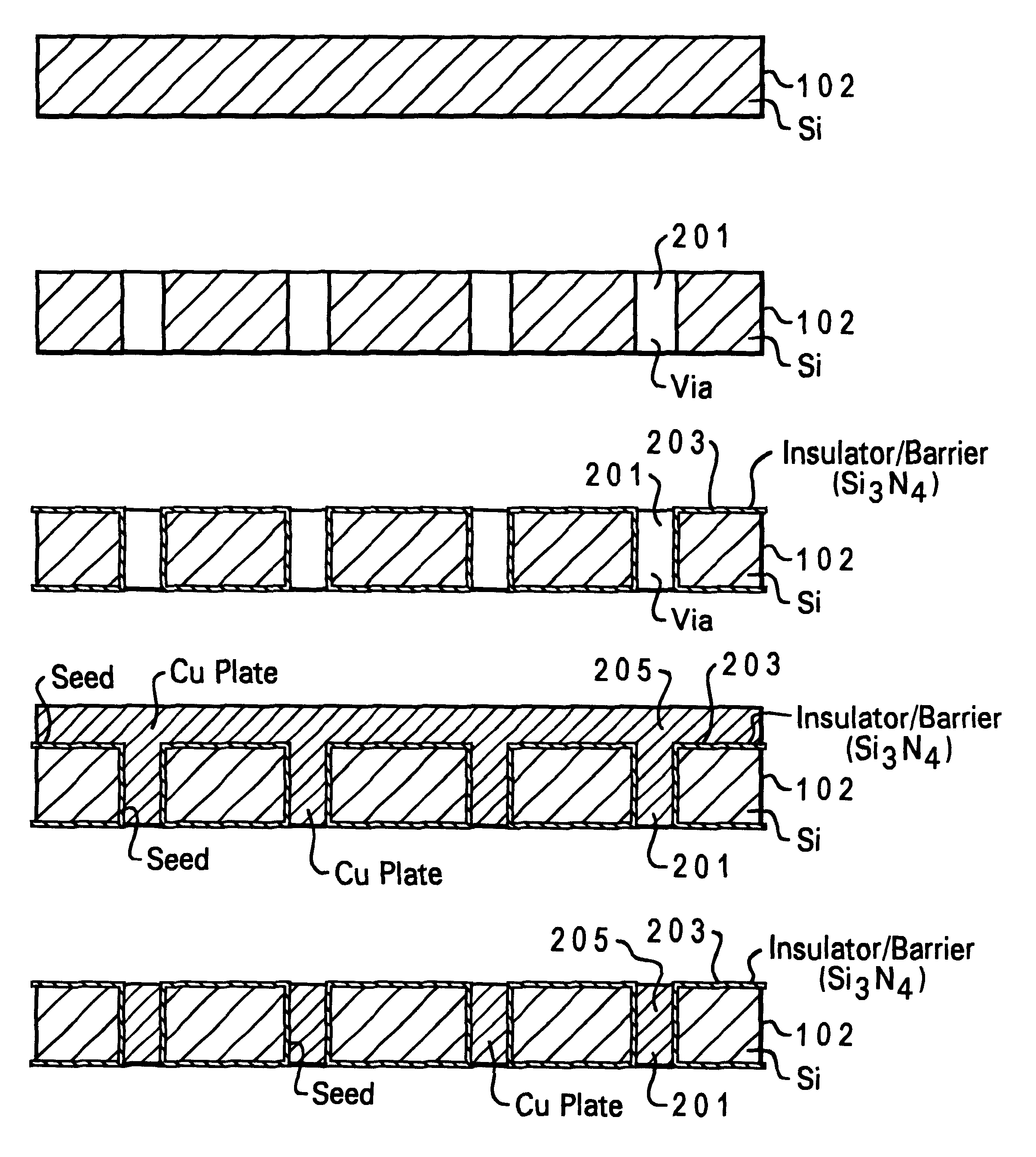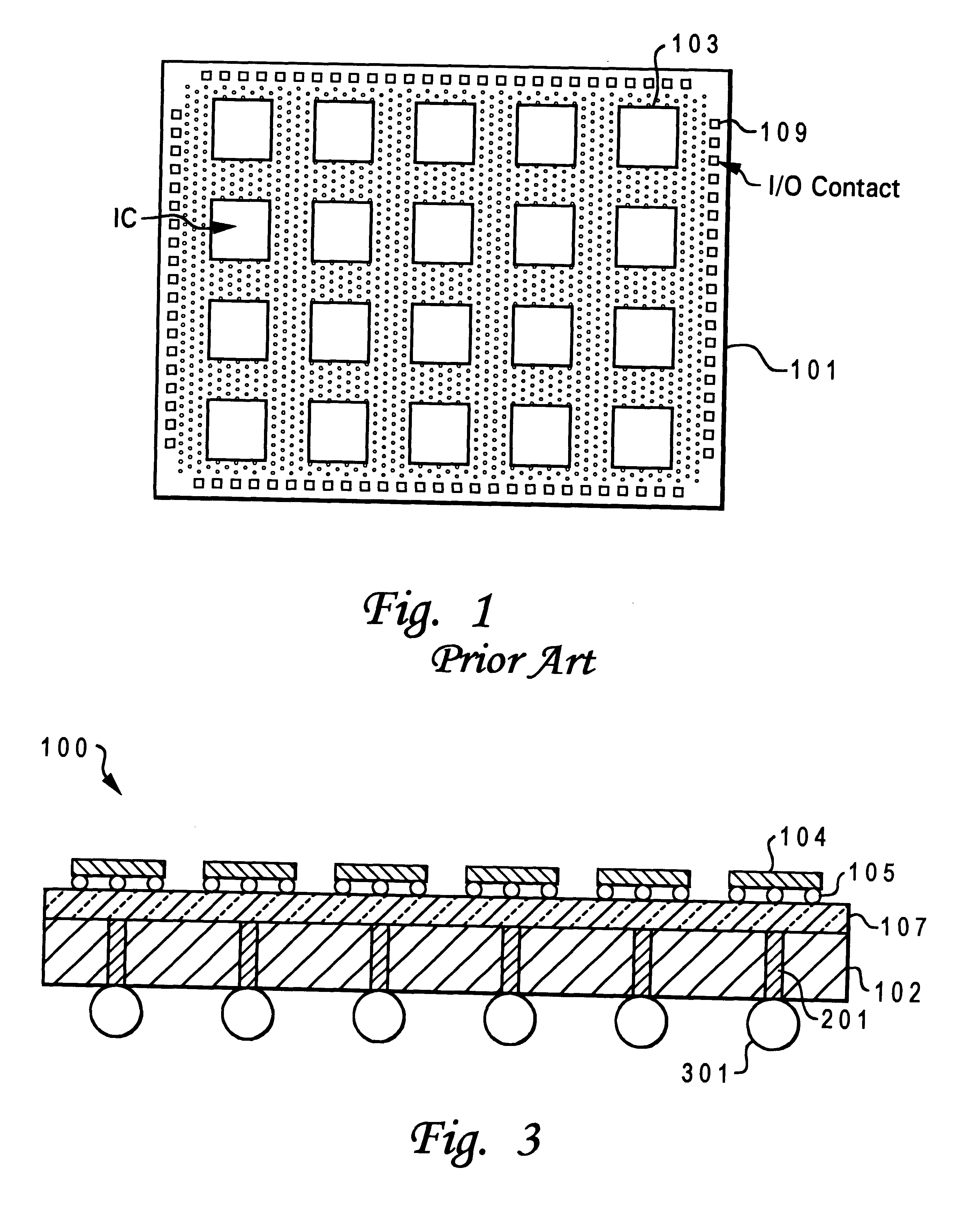Method for integrated circuit power and electrical connections via through-wafer interconnects
a technology of electrical connection and through-wafer, which is applied in the direction of semiconductor devices, basic electric elements, electrical apparatus, etc., can solve the problems of reducing performance, reducing the practicability of ceramic substrate use, and increasing the cost of ceramic substrate manufactur
- Summary
- Abstract
- Description
- Claims
- Application Information
AI Technical Summary
Problems solved by technology
Method used
Image
Examples
Embodiment Construction
This invention describes a silicon package with vias formed through the wafer to achieve interconnection to other components. The invention further describes the methods utilized to create the vias in the silicon substrate. With reference now to the figures and in particular with reference to FIG. 2, the process of creating the silicon substrate of the preferred embodiment is depicted. In the preferred embodiment, the wafer is first patterned to allow for the vias to be made with particular sizes and placed in the desired locations and at predetermined separation distances to maximize the chip area.
A standard silicon substrate 102 is utilized in the invention. A plurality of vias 201 are created in silicon substrate 102. In the preferred embodiment, vias 201 are created in one of two ways. The first method utilizes mechanical drilling. The silicon wafer is first submerged in a liquid, preferably water and held down in place either mechanically or with a wax or other adhesive substan...
PUM
 Login to View More
Login to View More Abstract
Description
Claims
Application Information
 Login to View More
Login to View More - R&D
- Intellectual Property
- Life Sciences
- Materials
- Tech Scout
- Unparalleled Data Quality
- Higher Quality Content
- 60% Fewer Hallucinations
Browse by: Latest US Patents, China's latest patents, Technical Efficacy Thesaurus, Application Domain, Technology Topic, Popular Technical Reports.
© 2025 PatSnap. All rights reserved.Legal|Privacy policy|Modern Slavery Act Transparency Statement|Sitemap|About US| Contact US: help@patsnap.com



